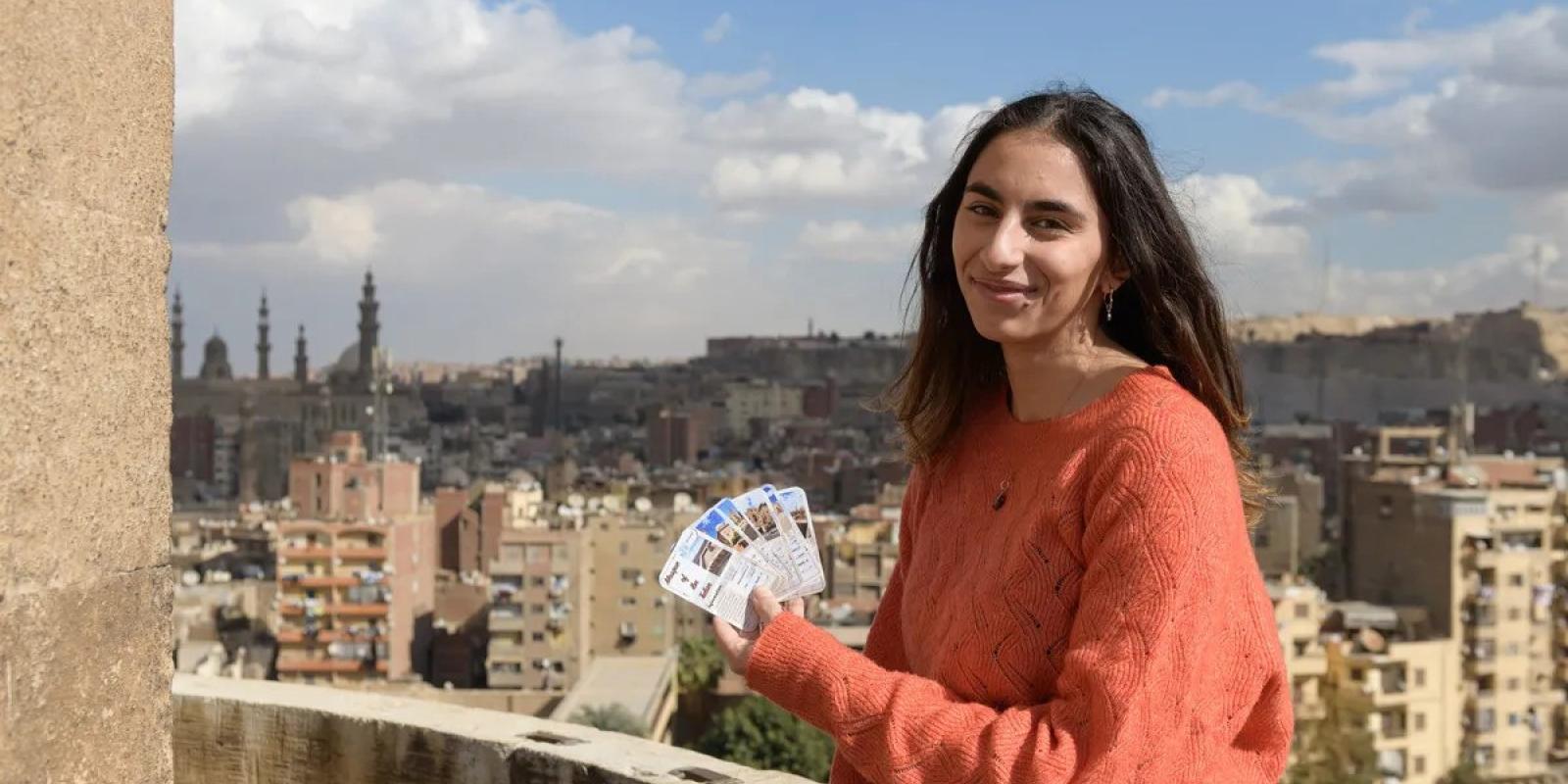
AUC Student Creates A Game To Teach Children About Cairo's Historical Monuments
Lena Boraei, a history and graphic design student at the American University in Cairo (AUC), has teamed up with the community initiative Athar Lina to launch an educational card game called Al Foora. The game introduces children to the rich history of Cairo’s
Al Khalifa neighborhood by highlighting 30 significant monuments, offering a fun and interactive way to engage with the city’s cultural heritage. Developed during an internship with Athar Lina, Al Foora allows players to learn about local landmarks by comparing attributes such as size and age in a competitive format. “I want to keep history exciting and show it to people in a more artistic
format,” Boraei said. “When people play it, I want them to take something from it and enjoy their day. Otherwise, it’s just information about monuments, and that’s less enticing.”
Lena was inspired to develop Al Foora after a field trip to Al Khalifa, where she noticed local shops selling products that reflected the area’s history. This observation sparked the idea of a game that could educate children about the monuments they see every day but may not fully appreciate. Players compete by placing down the top card in their hand and comparing numerical categories
about the monuments on their cards such as “size” and “century.” The player with the highest number in a given category wins that round.
The Al Khalifa neighborhood is home to monuments dating back to the 9 th century. Despite being listed as a UNESCO World Heritage site, many of these structures are at risk due to issues, like water erosion from sewer problems. Athar Lina, which translates to “The monument is ours,” is a conservation project that aims to engage citizens in preservation efforts and reframe monuments
as community resources. Their programs are all geared toward creating a sense of ownership between Al Khalifa residents and their cultural heritage. The project is managed by Megawra–BEC, a partnership between Megawra, an architecture firm focusing on conservation and heritage management, and the Built Environment Collective, a cultural and urban development NGO.
Boraei’s connection to Athar Lina was facilitated by Pascale Ghazaleh, associate professor and chair of AUC’s Department of History. Ghazaleh’s History of Cairo course emphasizes real-world engagement with issues related to preservation and tourism, encouraging students to actively participate in the ongoing conversation about who owns and manages cultural heritage. “A question that has fascinated me for a long time is, ‘Who owns things that are supposed to belong to everyone?’ I thought the students should be immersed in these conversations,” Ghazaleh explained. “I want them to understand that the city is theirs too and that they are part of the struggles over its past and future.”
Looking ahead, Boraei hopes to expand the concept of Al Foora to include other neighborhoods across Cairo, continuing her mission to make history accessible and enjoyable.